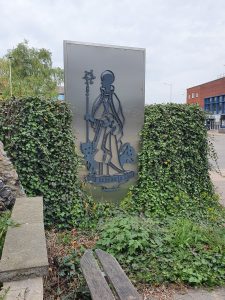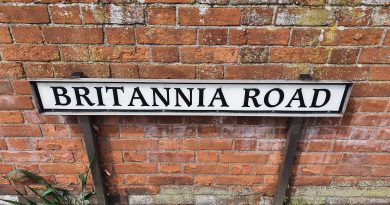Streets of Norwich – Wellington Lane
Part of my Streets of Norwich project….
Wellington Lane today is a strange little affair, running parallel to the inner ring-road street (I say street, more like a minor motorway) of Grapes Hill. Back in 1900, Wellington Lane is visible, but it now also covers what was Duck Lane. Grapes Hill was widened after the Second World War, so there is now no housing between Wellington Lane and Grapes Hill, it’s a soulless area of the city where the car triumphed.
This metal relief sculpture is located where St. Benedict’s Street and Wellington Lane meet, but more about that sculpture here.
Starting from the Duck Lane end, the city wall is on the right-hand side and these sections were previously embedded into housing.
A relatively long section of wall which has been mauled about over the centuries, but at least something has survived.
A gap between the wall, which starts to peter out at this point.
Looking back towards the Duck Lane end, the line of the wall has been retained.
The line of the wall goes shooting off into the bushes, with Grapes Hill on the right. There was an intriguing square tower here, but it was pulled down as part of the road expansion plans.
This is now getting towards the end of what was Duck Lane, and now into what was always known as Wellington Lane. Somewhere around where that tree is at the front, that was once the Wellington pub, which is how the street got its name. That pub, built in the mid-seventeenth century as a residential property, traded between 1822 and 1930, part of the Youngs & Co estate in the later part of its period of operation.
The bushes on the right are the former stretch of residential properties along Wellington Street and the city wall existed in this section. However, the whole lot went as part of the Grapes Hill road widening, although some of the properties in this area had already been lost or damaged during the Second World War.
The road starts to end here, connecting in with St. Giles Street on the left.
And looking back down Wellington Street, a heavily changed road over the last century. The houses on the left have gone as part of the Grapes Hill construction, and although some efforts have been made with landscaping, it’s not the most glamorous of areas. The road is so busy that it can’t be easily crossed, but there is a pedestrian bridge now so that people can get over to the Earlham Road area.













